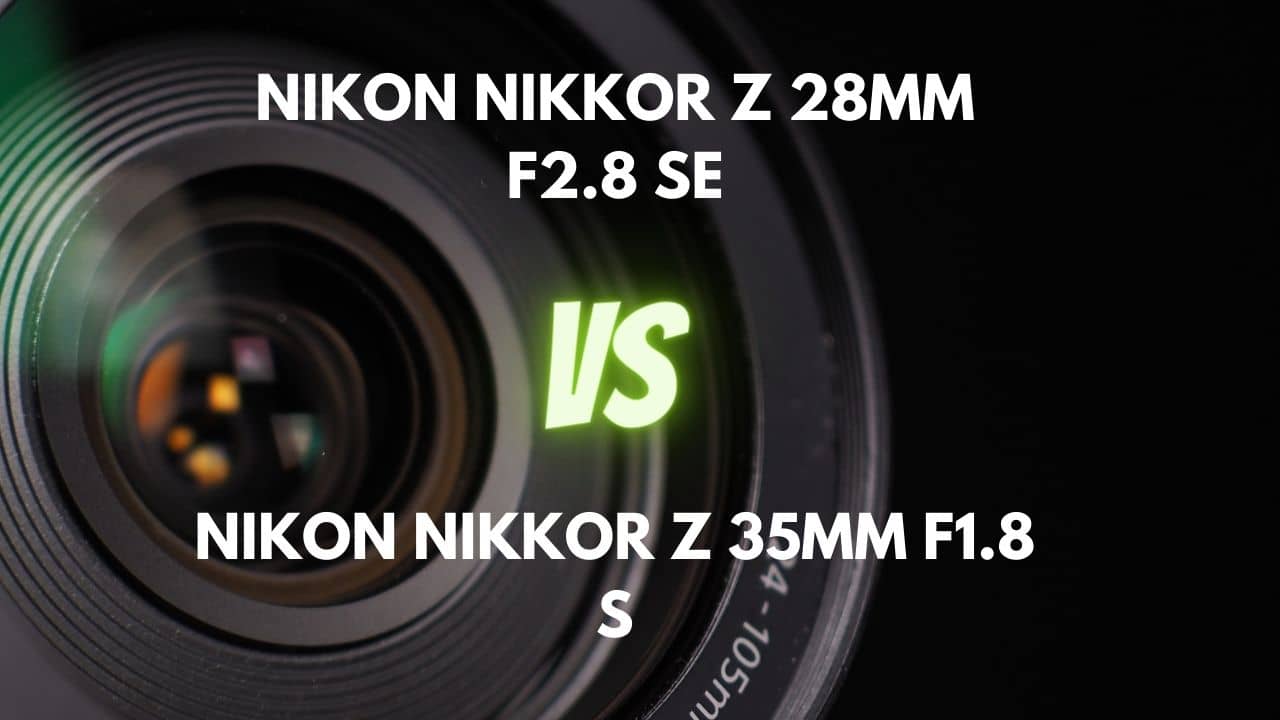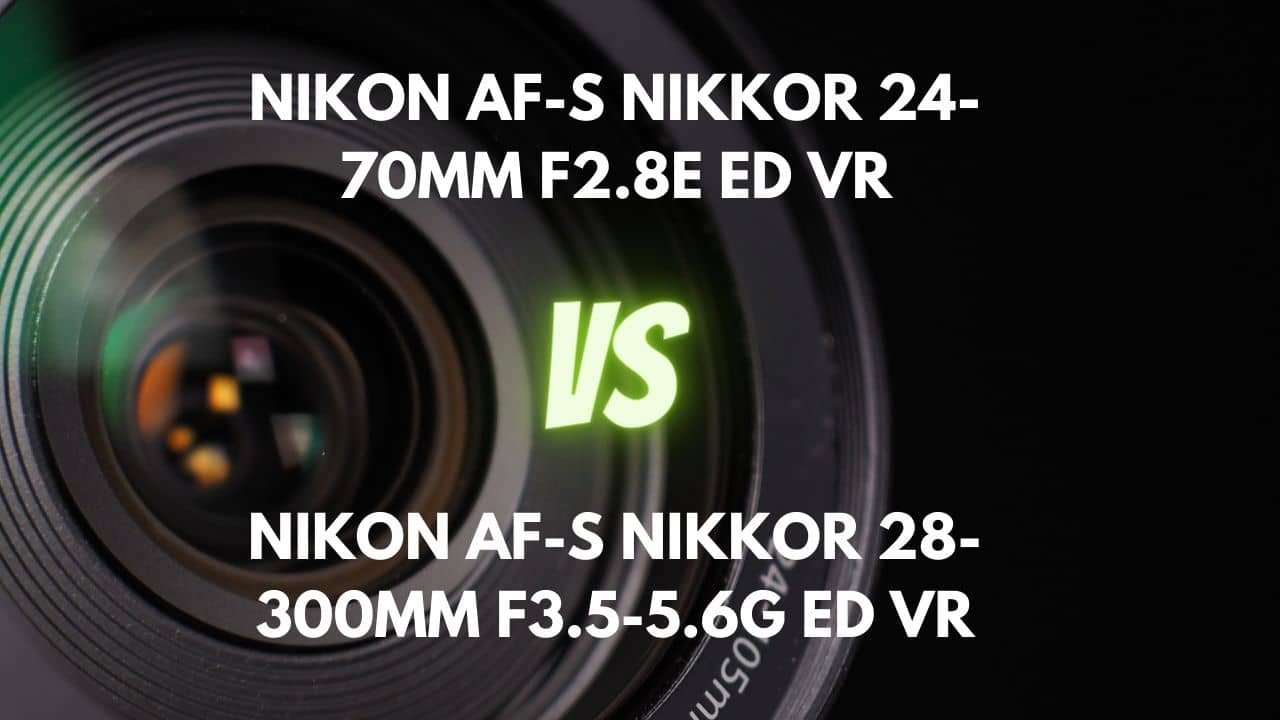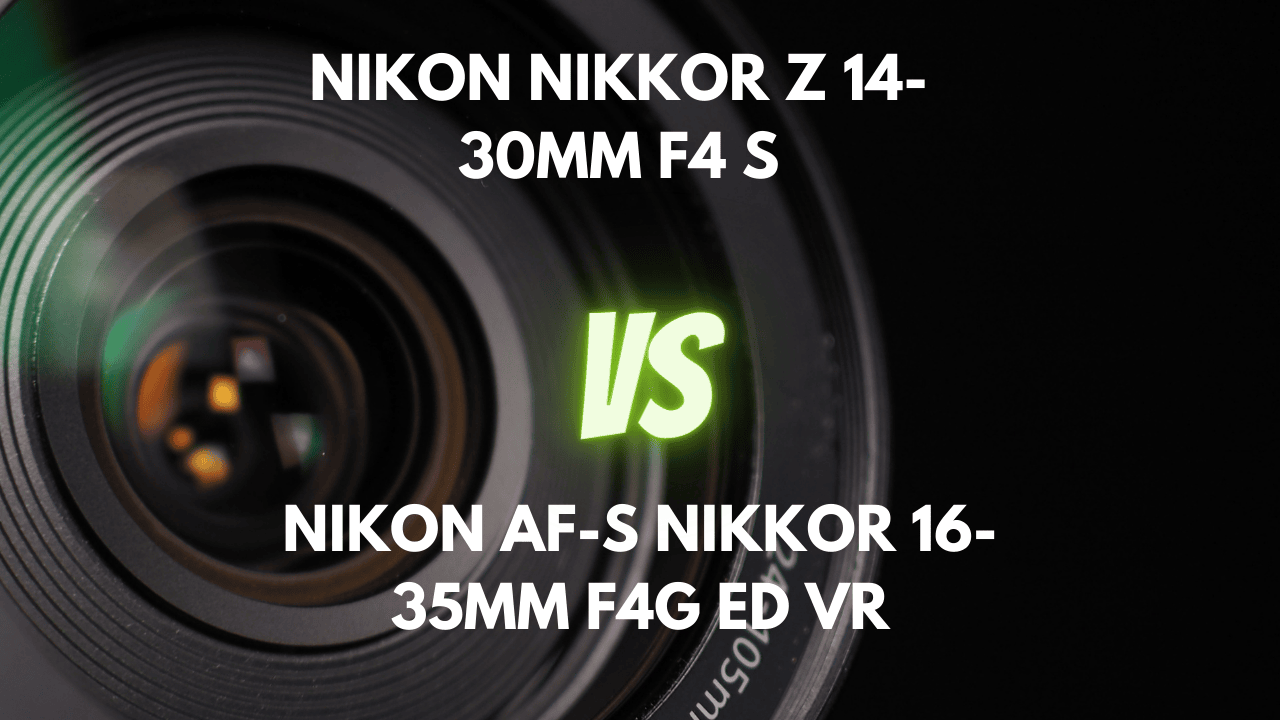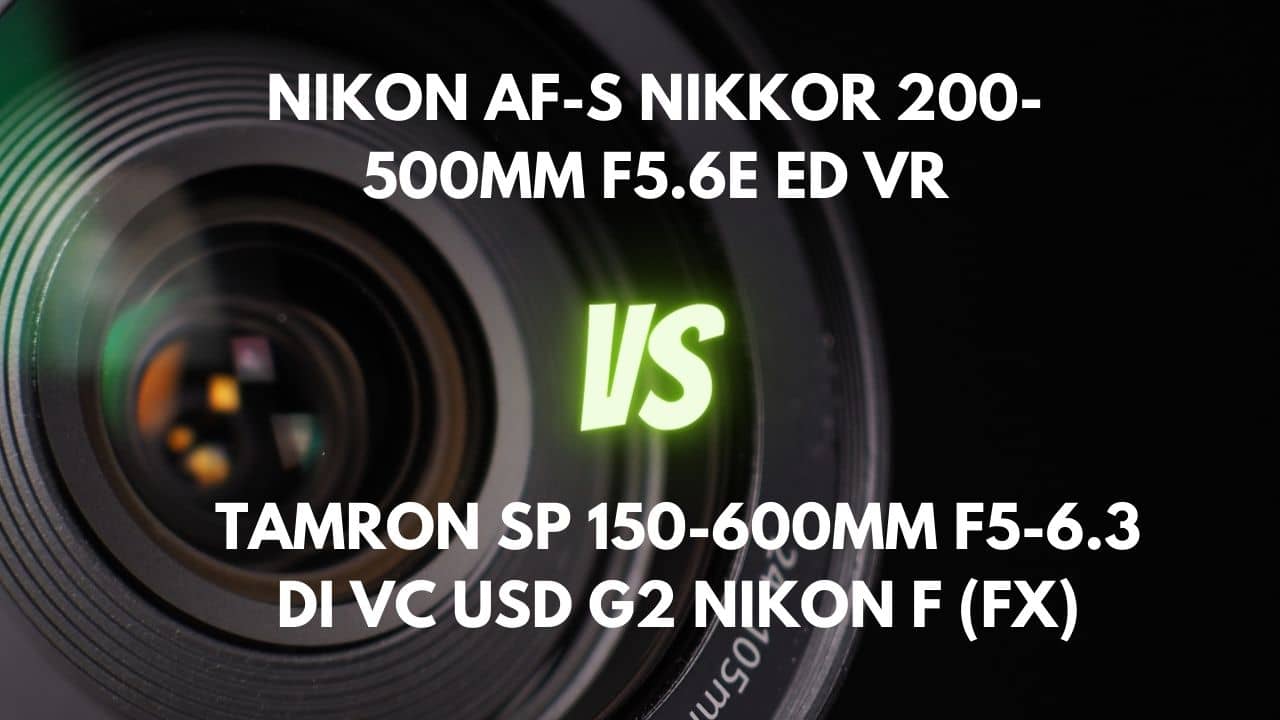Are you in the market for a versatile wide-angle zoom lens that can capture stunning landscapes, breathtaking architecture, or even intimate environmental portraits? Look no further, as we dive deep into a comparison of two highly acclaimed lenses: the Nikon 17-35mm f/2.8 and the Nikon 16-35mm f/4.
These lenses, designed for a broad range of photography styles, have their own unique set of strengths and characteristics that cater to different preferences and priorities.
In this article, we will explore the nuances of each lens, from low-light performance and sharpness to weather sealing and aberration control. As you embark on this journey with us, you’ll discover which lens can best elevate your photography skills, making you eager to grab your camera and start creating those awe-inspiring images you’ve always dreamt of capturing.
So, sit back, relax, and let us guide you through the world of wide-angle lenses, as we help you make an informed decision that will transform your photographic endeavors.
Overview
| Nikon AF-S NIKKOR 17-35mm F2.8D IF-ED | Nikon AF-S NIKKOR 16-35mm F4G ED VR | |
|---|---|---|
| Max Aperture | F2.8 | F4.0 |
| Aperture Type | Fixed | Fixed |
| Focal Range (mm) | 17-35 | 16-35 |
| Max Format | 35mm FF | 35mm FF |
| Zoom Ratio (X) | 2.1 | 2.2 |
The Nikon 17-35mm f/2.8 offers a maximum aperture of f/2.8, while the Nikon 16-35mm f/4 has a maximum aperture of f/4.0. This means that the 17-35mm lens can let in more light, which can be beneficial for low-light situations and creating a shallower depth of field. However, landscape and architectural photography often require a deeper depth of field, which can make the larger aperture less crucial.
The 17-35mm lens also has a slightly smaller zoom ratio (2.1X) compared to the 16-35mm lens (2.2X). Both lenses are fixed aperture and designed for 35mm full-frame format.
The 16-35mm lens has a slightly wider focal range, allowing for a broader field of view at 16mm, which can be advantageous for capturing expansive landscapes or tight interior spaces. However, the difference in focal range is minimal between these two lenses, and the 17-35mm still offers a wide-angle view.
In conclusion, the 17-35mm lens with its larger aperture may offer some advantages in low-light performance and depth of field control. However, the 16-35mm lens provides a slightly broader field of view.
Design and Ease of Use
| Nikon AF-S NIKKOR 17-35mm F2.8D IF-ED | Nikon AF-S NIKKOR 16-35mm F4G ED VR | |
|---|---|---|
| Diameter x Length (mm) | ⌀82.5×106mm | ⌀82.5×125mm |
| Weight (gr) | 745 | 680 |
| Filter Thread (mm) | 77 | 77 |
| Weather Sealing | No | Yes |
| Zoom Method | Rotary (internal) | Rotary (internal) |
| Distance Scale | Yes | Yes |
| DoF Scale | No | No |
| Hood Supplied | Yes | Yes |
| Hood Code | HB-23 | HB-23 |
Comparing the Nikon 17-35mm f/2.8 and Nikon 16-35mm f/4, we can see differences in their dimensions and weight.
The 17-35mm lens measures ⌀82.5x106mm and weighs 745 grams, while the 16-35mm lens measures ⌀82.5x125mm and weighs 680 grams. This means the 17-35mm lens is shorter but heavier than the 16-35mm lens.
In terms of portability, the 16-35mm lens has an advantage due to its lighter weight, making it easier to carry around for extended periods. However, the 17-35mm lens has a more compact design, which could be beneficial when it comes to storage and discreetness.
Considering balance, the difference in weight between the two lenses might impact the overall balance of your camera setup, with the heavier 17-35mm lens potentially making the camera feel more front-heavy. On the other hand, the 16-35mm lens, being lighter, might provide a better balance for your camera setup.
Both lenses feature an internal rotary zoom method, which means they maintain their physical size while zooming. This design offers several advantages, such as consistent balance during shooting, easier weather sealing, and a more compact form factor. However, it might also result in increased complexity and potentially higher weight due to the additional mechanics required.
In conclusion, choosing between the 17-35mm and 16-35mm lenses depends on your preferences and priorities. If you value a more compact design and don’t mind the extra weight, the 17-35mm lens might be the better choice. However, if you prefer a lighter lens and are willing to accept a slightly longer design, the 16-35mm lens may be more suitable for your needs.
Lens Mount and Barrel
The Nikon 17-35mm f/2.8 offers a metal lens mount without a rubber gasket, while the Nikon 16-35mm f/4 lens mount is made of dull-chromed brass and features a rubber gasket for weather sealing. Additionally, the 16-35mm lens has a magnesium alloy chassis, enhancing its overall toughness.
In terms of lens barrel materials, the 17-35mm lens has a metal barrel with a semi-matte black sputtered epoxy paint finish, and an internal focusing design that keeps its physical size constant during zooming. Conversely, the 16-35mm lens has a plastic barrel with weather-resistant sealing, which is more lightweight but potentially less durable.
Given these differences, the 16-35mm lens offers a more rugged build and weather sealing, making it suitable for photographers working in challenging environments. The 17-35mm lens, on the other hand, has a more premium feel due to its metal construction, but lacks weather sealing, making it less ideal for outdoor shooting.
Weather Sealing
The Nikon 17-35mm f/2.8 does not have any weather sealing features such as gaskets at the lens mount, internal seals at the rings, switches, or front of the barrel. This makes the lens more vulnerable to dust, moisture, and light water splashes, and may require additional protection in inclement weather.
In contrast, the Nikon 16-35mm f/4 offers some degree of weather sealing, thanks to the rubber gasket at the lens mount. This, combined with a solid plastic construction and weather-sealed metal lens mount, provides better protection against environmental elements, making it more suitable for outdoor photography in various conditions.
In conclusion, when comparing the weather sealing features of the 17-35mm and 16-35mm lenses, the 16-35mm lens is superior, offering better protection against dust, moisture, and light water splashes. This makes the 16-35mm lens a more reliable choice for photographers who often shoot in harsh conditions or those who value the additional protection for their investment. However, if weather sealing is not a top priority and you primarily shoot portraits indoors or in controlled settings, the 17-35mm lens could still be a viable option.
Rings
The Nikon 17-35mm f/2.8 features 2 well-designed control rings: a zoom ring and a focus ring. Both operate smoothly, allowing for precise framing and easy manual focusing. The rings are ergonomically beveled, providing comfortable grip and control without any zoom creep. Additionally, the lens has a windowed distance scale for quick reference.
On the other hand, the Nikon 16-35mm f/4 also has 2 rings: a zoom ring and a focus ring. The zoom ring, located near the camera body, moves smoothly through a quarter turn between the 16mm and 35mm focal length settings. The focus ring, situated towards the front of the lens, rotates through a quarter turn as well, covering the range of focus distances.
Both rings have ridged rubber coatings for secure grip and are well damped. The zoom ring has wider ridges with two notches cut into each for added grip security. However, some lens copies may exhibit play between the focus ring and internal gears.The rotation of the focus ring is limited to 50 degrees, but it is adequate for achieving precise focus when the lens is wide open at the longer focal length. In front of the focusing ring, a recessed distance scale with four settings is available, but there are no depth-of-field markings.
In conclusion, the 17-35mm lens offers a superior ring design, providing smoother operation, better ergonomics, and more reliable focus ring performance. Its well-spread-out zoom ring and continuous focus ring, along with the absence of play or zoom creep, make it an excellent choice for photographers who prioritize precise control and comfortable handling in their lenses. While the 16-35mm lens still performs reasonably well, its potential focus ring issues and limited rotation range make the 17-35mm lens the better option in terms of ring design.
Switches/Buttons
The Nikon 17-35mm f/2.8 features a single, easy-to-use switch labeled as “M/A – M,” which actually functions as an AF/MF switch. In the “M/A” position, the lens operates in autofocus mode, while still allowing for manual focus adjustments without needing to switch to manual focus mode. Apart from this, there are no other switches or buttons on the lens.
In comparison, the Nikon 16-35mm f/4 is equipped with 2 slider switches located behind the focusing ring on the lens barrel. The top switch serves as the focus mode switch, enabling users to choose between autofocus and manual focus modes. The lower switch toggles the VR II stabilization system on and off, providing additional control over image stabilization.
In conclusion, the choice between the switches and buttons of these two lenses depends on your preferences and requirements. The 17-35mm lens offers a simpler design with a single switch for autofocus and manual focus adjustments. This might be suitable for those who prefer a minimalist and more straightforward approach. On the other hand, the 16-35mm lens provides more control with separate switches for focus mode and image stabilization. This lens may be a better fit for photographers who desire extra control over their lens settings. Overall, the 16-35mm lens has a slight edge in terms of functionality, as it offers more customization options with its additional switch for image stabilization.
Filter Thread
The Nikon 17-35mm f/2.8 features a versatile and commonly used metal 77mm filter thread. The front element and filter thread do not rotate during focus, simplifying the use of filters. This lens is compatible with standard filters, including the Hoya multicoated HD3 UV filter, which repels dirt and fingerprints.
On the other hand, the Nikon 16-35mm f/4 also comes with a 77mm filter thread, which is large and suitable for landscape photography. Its plastic exterior is lightweight and can recover from drops. The lens’s filter thread is designed to work well with various filters, such as ND, IR, and CPL filters. It is particularly appealing for photographers who frequently use filters. For safeguarding the lens and improving the quality of the images, it is advisable to utilize top-notch filters such as the Hoya multicoated HD3 UV or the B+W 77mm 010.
In conclusion, both lenses offer a 77mm filter thread, making them equally versatile when it comes to filter compatibility. The 17-35mm lens has the advantage of a metal filter thread and non-rotating front element, which makes it easier to use with filters. Meanwhile, the 16-35mm lens boasts a lightweight plastic filter thread that is more resilient against drops.
Lens Hood
The Nikon 17-35mm f/2.8 and Nikon 16-35mm f/4 both come with the same HB-23 plastic bayonet hood, offering similar protection for each lens. The hood features a matte black sputtered epoxy paint finish over alloy and has a simple beveled design without a scalloped shape. The hood is reversible for convenient storage and can be used with a polarizer filter. The hood’s shortness, due to the wide angle of view, does not compromise its ability to protect the lens and prevent unwanted light from entering.
Focusing and Optical Stabilization
| Nikon AF-S NIKKOR 17-35mm F2.8D IF-ED | Nikon AF-S NIKKOR 16-35mm F4G ED VR | |
|---|---|---|
| Autofocus | Yes | Yes |
| AF Motor | Silent Wave Motor | Silent Wave Motor |
| Rotating Front Element | Does not rotate on focusing | Does not rotate on focusing |
| Min Focus Distance | 0.28m | 0.28m |
| Max Magnification (X) | 0.22 | 0.25 |
| Full-Time Manual Focus | Yes | Yes |
| Focus Method | Internal | Internal |
Focusing Performance
The Nikon 17-35mm f/2.8 features a Silent-Wave Drive autofocus system that operates near silently and very fast, providing almost instantaneous focusing with great accuracy. The lens has an internally focusing design, maintaining a constant length at all times. Manual focus is smooth and continuous, with a manual focus override for added convenience.
The Nikon 16-35mm f/4, on the other hand, also boasts a fast, accurate, and very quiet autofocus system, powered by a Silent Wave Motor (SWM). It excels in low-light situations and offers manual focus override for more control. The focusing speed is impressive, taking only 0.5 seconds to go from close to infinity.
While the manual focus action is smooth and well-damped, there may be some play between the focus ring and internal gears on certain copies of the lens. When focusing, the lens may record audible clacks and some snaring sounds, but the VR operation remains quiet.
In conclusion, both lenses have excellent focusing performance, with fast, accurate, and quiet autofocus systems. The 17-35mm lens offers a slight edge with its near-silent operation and internally focusing design. However, the 16-35mm lens is still a strong contender, especially when considering its outstanding low-light performance and quick focusing speed.
Optical Stabilization
The Nikon 17-35mm f/2.8 does not offer any optical stabilization, whereas the Nikon 16-35mm f/4 features a Vibration Reduction II system that Nikon claims can provide an advantage of up to 4 stops. During field tests, it was observed that the 16-35mm lens can facilitate shutter times up to 3 stops longer at the longer end and up to 2 stops longer at the shorter end of the focal range, provided that the subject is stable. The Vibration Reduction operation is quiet, and the lens has a switch to enable or disable it.
Optical stabilization is less critical for wide-angle lenses, as they are generally less prone to camera shake. However, stabilization can be beneficial in specific situations, such as low-light conditions, handheld shooting, or recording video. In recent times, several modern cameras feature in-body image stabilization (IBIS) that can effectively mitigate the impact of camera shake when using wide-angle lenses, even in the absence of built-in optical stabilization in the lens.
In conclusion, the 16-35mm lens offers superior optical stabilization compared to the 17-35mm lens, which has none. However, depending on the type of photography, camera support, or the presence of IBIS, the lack of optical stabilization in the 17-35mm lens might not be a significant drawback.
Image Quality
| Nikon AF-S NIKKOR 17-35mm F2.8D IF-ED | Nikon AF-S NIKKOR 16-35mm F4G ED VR | |
|---|---|---|
| Special Elements | 3 ASPH | 2 ED glass elements, 3 aspherical lenses and Nano Crystal Coat |
| Diaphragm Blades | 9 | 9 |
| Circular Aperture | Yes | Yes |
Aberration
The Nikon 17-35mm f/2.8 exhibits well-controlled chromatic aberration and minimal coma. Coma appears as smeared blobs around bright points of light in the corners at 17mm when shooting wide open, but this issue disappears by f/5.6.
On the other hand, the Nikon 16-35mm f/4 boasts impressive chromatic aberration control, with virtually no evidence of lateral chromatic aberrations. Despite shooting in raw format, this flaw is hardly noticeable, and with modern Nikon digital SLR bodies, it can be automatically corrected when capturing JPEG images. Additionally, the 16-35mm lens produces negligible levels of coma and spherical aberration, resulting in excellent optical performance with minimal aberrations.
In conclusion, both lenses perform well in terms of aberration control. However, the 16-35mm lens has a slight edge over the 17-35mm lens due to its superior chromatic aberration control and minimal levels of coma and spherical aberration.
Sharpness
The Nikon 17-35mm f/2.8 demonstrates exceptional sharpness, even when shooting wide open. However, the corners struggle on large FX sensors at the short end of the zoom range. Stopping down considerably improves corner sharpness, resulting in impressive results.
At 35mm, the lens is sharp even in the corners at f/2.8, with diffraction limiting performance at f/16 and f/22. When stopped down to f/5.6 or longer focal lengths, the lens is super-sharp throughout the frame. The sharpest aperture varies depending on the focal length and aperture setting, typically ranging from f/4 to f/8.
In comparison, the Nikon 16-35mm f/4 exhibits good to excellent sharpness overall, with some softness at the edges when using wider apertures. Center sharpness is generally good, and the sharpest aperture slightly varies depending on focal length.
At 16mm, the center is sharp wide open, with the sharpest aperture at f/5.6. The corners are softer wide open, but sharpness recovers to a good level when stopped down. At 35mm, the lens exhibits good resolution in both borders and corners, and stopping down does not result in a significant improvement in sharpness. The aperture range of f/8 or f/11 provides the sharpest images, while there may be some reduction in contrast at f/22.
In conclusion, both lenses perform well in terms of sharpness. However, the 17-35mm lens has a slight advantage, delivering impressive sharpness even at wider apertures and consistently excellent performance throughout the frame when stopped down.
Bokeh Quality
The Nikon 17-35mm f/2.8 produces fairly good and realistic bokeh, which is neutral to good at ordinary distances at 17mm when stopped down. When shooting closer than 2 feet at 35mm, the bokeh appears very neutral. Although not specifically described as “smooth and beautiful,” the overall impression is positive, aligning with expectations for a professional-grade lens.
On the other hand, the Nikon 16-35mm f/4 features a 9-segment diaphragm with rounded blades, resulting in pleasing bokeh. While achieving a substantially out-of-focus background is uncommon for an ultra-wide to wide zoom lens, when it occurs, the 16-35mm lens delivers excellent bokeh quality.
In conclusion, both lenses perform well in terms of bokeh quality. However, it is important to remember that bokeh quality is not usually a primary concern for wide-angle lenses, as they are typically designed to capture broader scenes with a large depth of field.
Flare/Ghosting
The Nikon 17-35mm f/2.8 boasts excellent resistance to flare and ghosting, thanks to its aspherical elements. Its performance is on par with or even surpasses fixed ultra-wide lenses in this aspect. Even shooting directly into the sun doesn’t pose a problem, and any visible magenta spots can be easily blocked with your hand. The included plastic bayonet hood further minimizes potential flare or ghosting.
On the other hand, the Nikon 16-35mm f/4 performs well in minimizing flare and ghosting, and only under strong backlight with the sun either inside or just outside the frame can some visible flare be produced. While not completely immune to flare, it outperforms other lenses in this aspect. Additionally, the lens responds well to stopping down, with minimal diffraction effects observed at f/16 and f/22. Overall, it delivers solid performance without being outstanding in any particular discipline.
In conclusion, the 17-35mm lens exhibits superior flare and ghosting resistance compared to the 16-35mm lens. Its aspherical elements and included plastic bayonet hood contribute to its exceptional performance, making it a preferable choice for those seeking better flare and ghosting control.
Vignetting
The Nikon 17-35mm f/2.8 displays pronounced vignetting, particularly at the wide end of the zoom range. However, stopping down can reduce it to less noticeable levels. At 17mm, minor vignetting may still be visible at f/2.8. It’s important to note that the vignetting analysis was based on uncorrected JPEGs straight from the camera. The lens also performs well with filters and shows no vignetting on DX cameras.
On the other hand, the Nikon 16-35mm f/4 exhibits noticeable vignetting in open-aperture shots at all focal length settings, but the vignetting is not very prominent and can be easily rectified by decreasing the aperture by one or two stops. When set to 16mm, noticeable vignetting can be observed, but the center performance remains excellent even at maximum aperture.
In conclusion, the 16-35mm lens has an edge in terms of vignetting control over the 17-35mm lens, as it is less noticeable and can be easily mitigated by stopping down the aperture.
Distortion
The Nikon 17-35mm f/2.8 exhibits some distortion, particularly at the 17mm end where barrel distortion is present. However, it’s not a significant issue and is, in fact, better than other lenses in its class. The distortion remains consistent across all distances, unlike some fixed focal length lenses where distortion worsens at close distances. Although software can be used to correct the distortion, the results may not be perfect due to the complexity of some distortion patterns.
On the other hand, the Nikon 16-35mm f/4 displays noticeable barrel distortion at 16mm (5.7%), but it can be easily corrected in post-processing using lens correction tools in Lightroom and Photoshop. As you zoom in, the distortion decreases gradually, and at 24mm, the lens is entirely free of distortion. Nevertheless, as you continue to zoom towards 35mm, pincushion distortion becomes noticeable, with approximately 1.3% distortion observed in real-world scenarios.
Nikon SLRs offer in-camera distortion control for JPGs, but correcting for barrel distortion at the wide end can cut edges off your composition. Capturing images in Raw format permits easy one-click distortion correction, or alternatively, fine-tuning adjustments using the Distortion slider, enabling less drastic corrections while preserving the details at the edges of the image.
In conclusion, the 17-35mm lens performs slightly better in terms of distortion control, especially at the wide end, compared to the 16-35mm lens.
Final Verdict
Taking all factors into consideration, the choice between the Nikon 17-35mm f/2.8 and Nikon 16-35mm f/4 comes down to your personal preferences and priorities.
The 17-35mm lens offers a larger aperture, superior sharpness, better distortion control, and flare and ghosting resistance. It also has a more premium feel due to its metal construction and a near-silent autofocus system. However, it lacks weather sealing and optical stabilization.
The 16-35mm lens, on the other hand, provides a slightly broader field of view, superior weather sealing, better vignetting and chromatic aberration control, and excellent optical stabilization. It is more suitable for photographers who work in challenging environments and value a more rugged build and protection for their investment.
Ultimately, if you prioritize low-light performance, sharpness, and better control over distortion, flare, and ghosting, the 17-35mm lens might be the better choice. However, if you prefer a lens with better weather sealing, optical stabilization, and aberration control, the 16-35mm lens may be more suitable for your needs.






